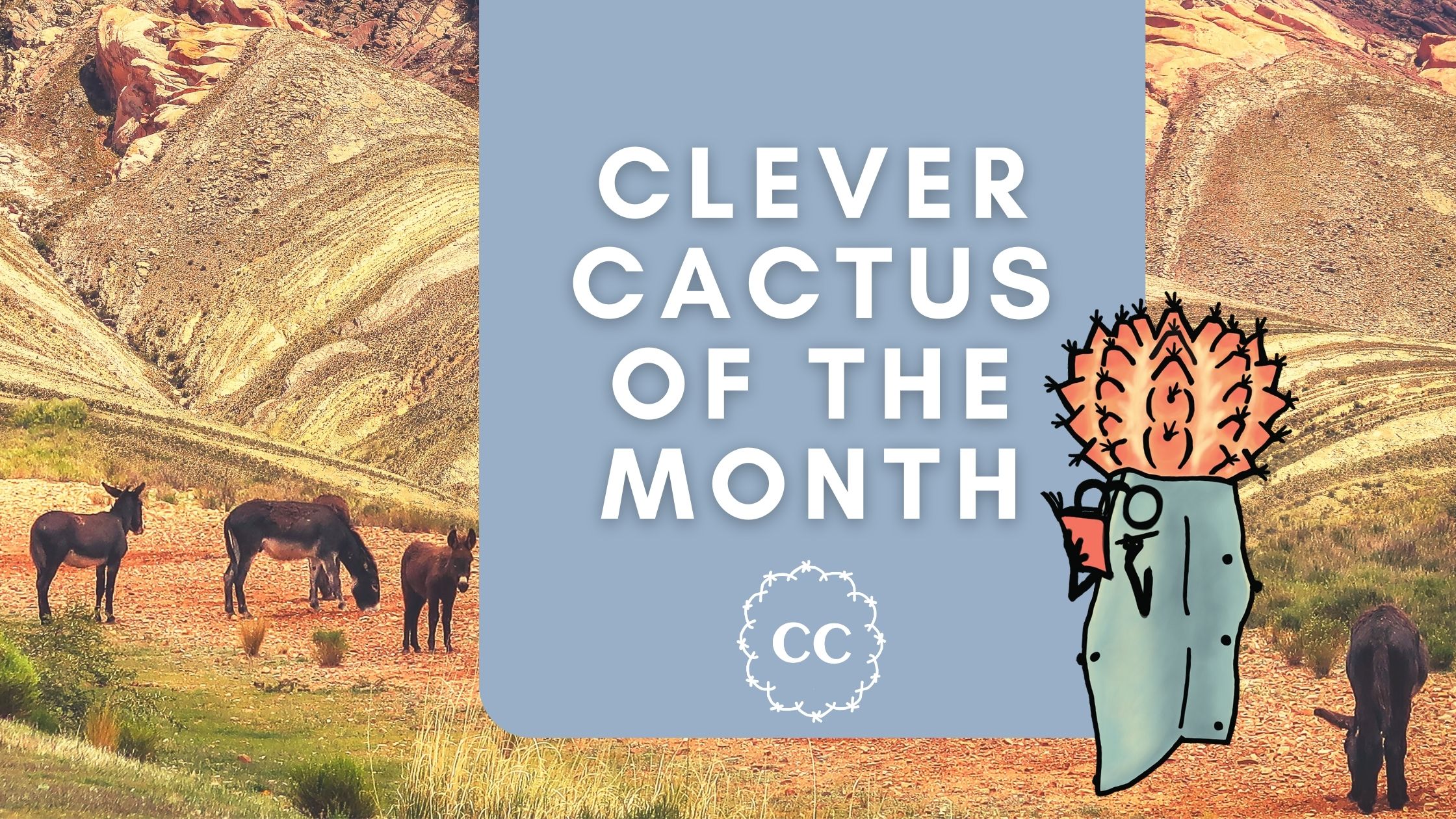June has just begun, which means summer is right around the corner. When it comes to the summer months (and heat), relaxing is key. Here are a few ideas to take full advantage of summer:
- Hit the beach
- Read a book in your backyard, or on your balcony or porch
- Have a park gathering with friends or family
- Explore a part of your town you’ve never visited before
- Take a day trip north, south, east or west of where you are (pick a direction and just, go!)
- Bike along the riverside (if you have a riverside to bike on)
One big leap for moon cacti!
By Laura Dicker
- Name(s): Moon cactus, Hibotan cactus, Ruby Ball, Red Cap, Red Hibotan
- Species: Gymnocalycium mihanovichii
- Genus: Gymnocalycium & Hylocereus
- Home: South America, specifically Argentina, Brazil, Paraguay and Bolivia
- Natural habitat: desert environments
- Height: 3 to 10 cm
- Flower: bell- and funnel-shaped white, purple or pink flowers
- Blooms: once a year, typically during the spring season
- Availability: You’ll stumble across these beauties at most plant or big box homeware stores

It’s Alive!
Did you know moon cacti are actually mutants?! They’re made by essentially Frankensteining two different cacti together. This practice dates back to 1940s Japan. Cactus hobbyists found a red mutant-Gymnocalycium mihanovaii, and tried crossbreeding it with other cacti to make one entirely red creation. The most successful combination – aka the cacti version of Frankenstein’s monster – was Gymnocalycium mihanovaii and Hylocereus.
This combination of plant parts is what lets the mutant Moon Cactus survive. The top colourful cactus lacks the ability to create chlorophyll, which makes it hard to produce necessary nutrients through photosynthesis (meaning it can’t snack on yummy sunlight and survive on its transformative goodies). This is what gives them their vibrant yellow, orange or red. Here’s where human design helped: the top cactus benefits from the chlorophyll being produced by its Hylocereus cactus host, ensuring both survive.
Living life to the fullest
Moon cacti may actually be mutants, but that doesn’t mean they can’t lead full, happy lives! Though a rare occurrence, moon cacti are known to grow bell- or funnel-shaped white, purple or pink flowers from its colourful, top bulb. You will see short stem formations begin to sprout before any blooms make themselves known.
The unfortunate reality for the moon cactus is, even with a successful graft, the two fused cacti grow at different rates. Due to this, it’s unlikely that the combination will survive more than a few years. The area where they are grafted can tear, putting the whole cacti in peril.
That said, it won’t be difficult to graft Gymnocalycium mihanovaii onto a new host, giving it a second life. Though, the grafting process should be done by experienced Dr. Frankensteins, as the procedure comes with its own varied risks.
Moon Cactus Survival Guide
The moon cactus acts a lot like a succulent. It likes to be watered deeply, then left alone for a while. Much like Frankenstein’s monster, moon cacti avoid brightness. While they don’t lurk in the shadows, they do favour indirect sunlight.
- Sunlight: It loves brightness without being in direct sunlight.
- Water: Soak the moon cactus all the way through and discard any residual water. You can wait until the soil is bone-dry before watering again. Skip watering in the winter and keep dry. Avoid overwatering, so that you don’t give it root rot.
- Soil: Well-draining and porous.
- Temperature: Thrives in dry heat, but can survive as cold as 9°C.
- Fertilization: Once every three months during the growth season and can be skipped entirely during the dormant season.

Repotting your Moon Cactus
Moon cacti are slow growers and love a root-hugging planter. It can chill out in the same pot for years before needing to be repotted. When the time comes, spring is the best time to make the big move.
The planter should be made of unglazed clay: the porosity lets water and air to penetrate the sides of the pot free instead of being trapped inside. The planter should also have numerous drainage holes to avoid leaving the roots in an environment that exceeds its comfort level in humidity.
Before committing it to its new chambers, make sure the soil is completely dry. Shake the old soil away from the roots before planting it into its new environment and leave it dry for a week.
